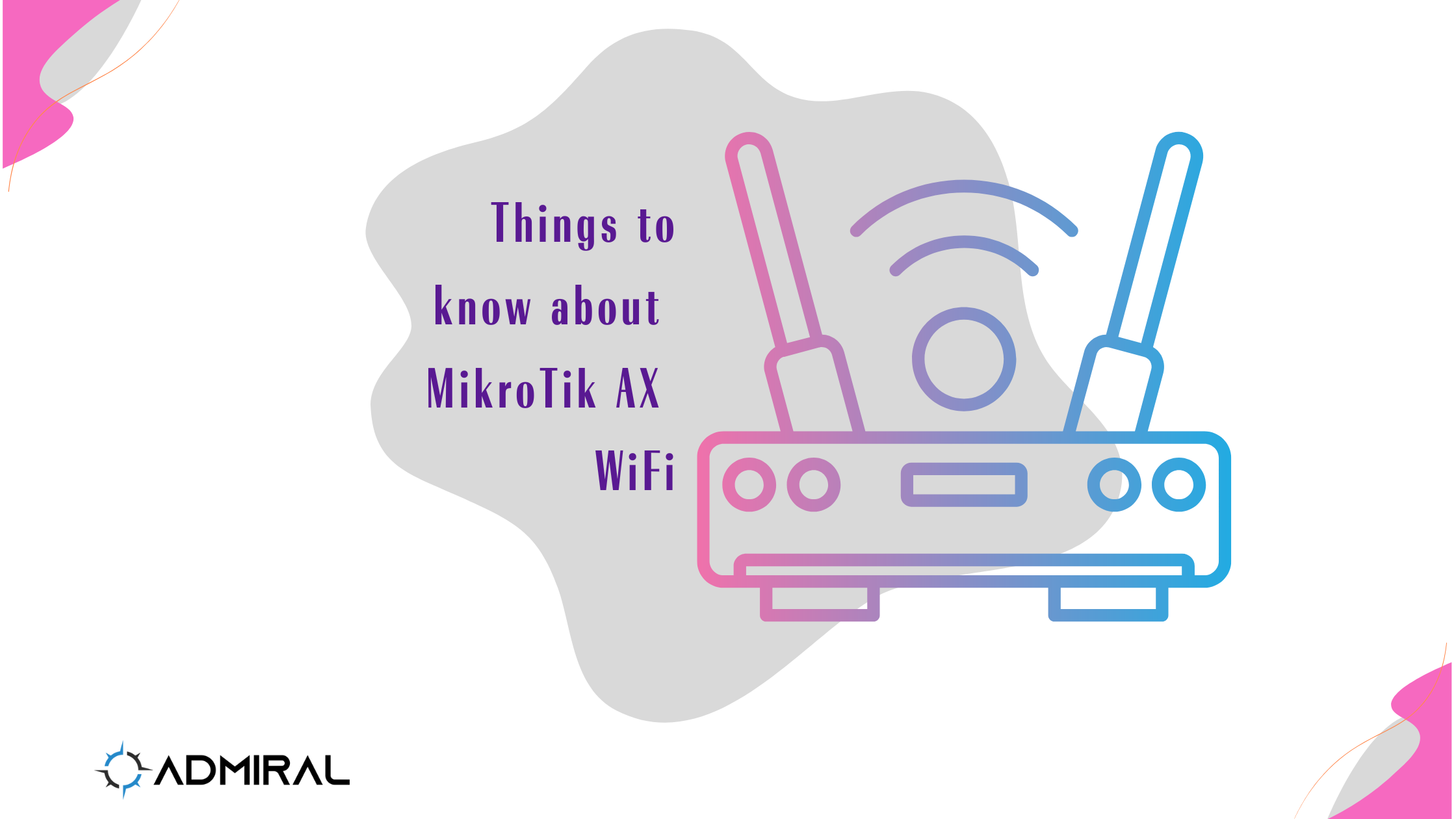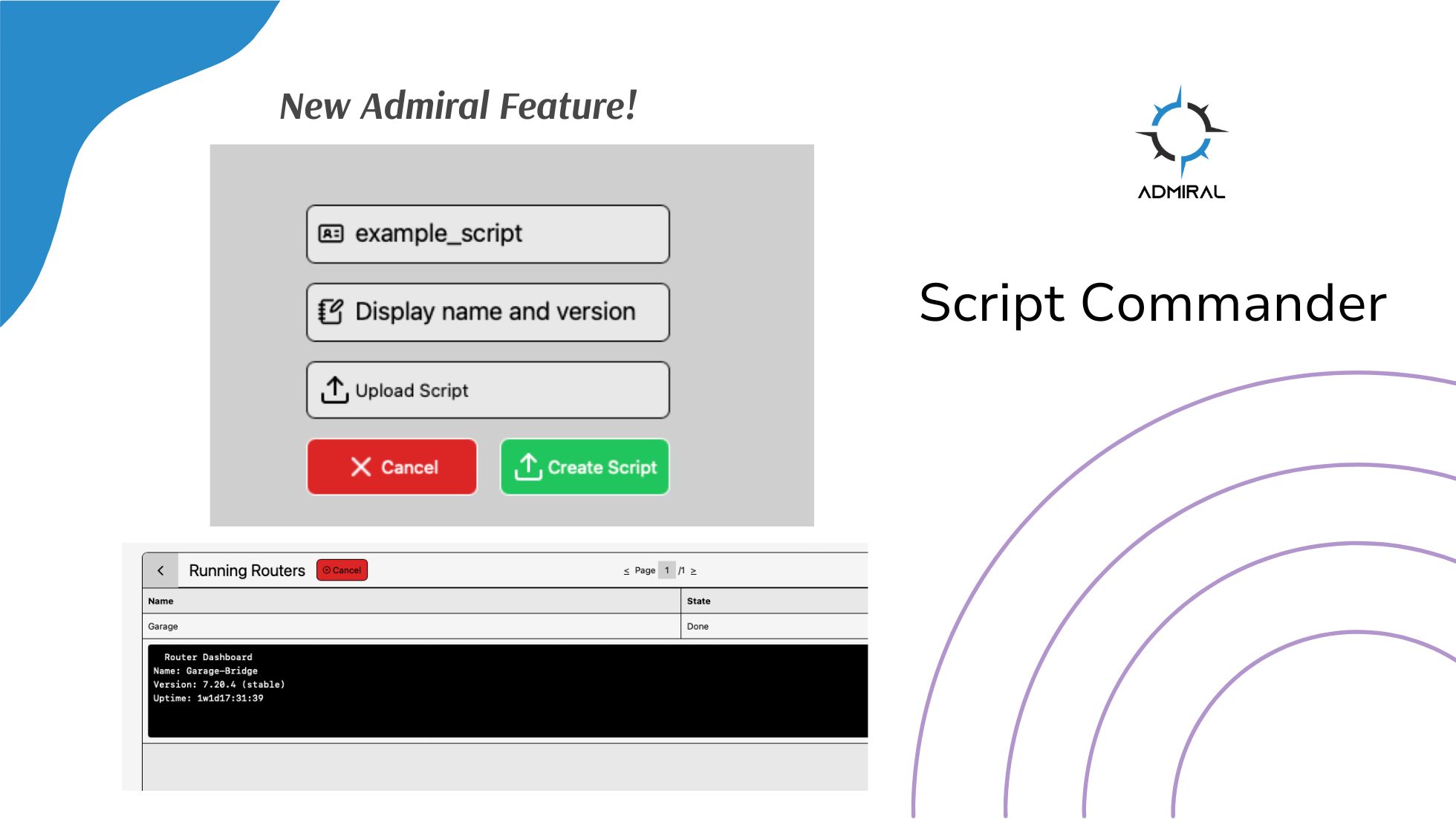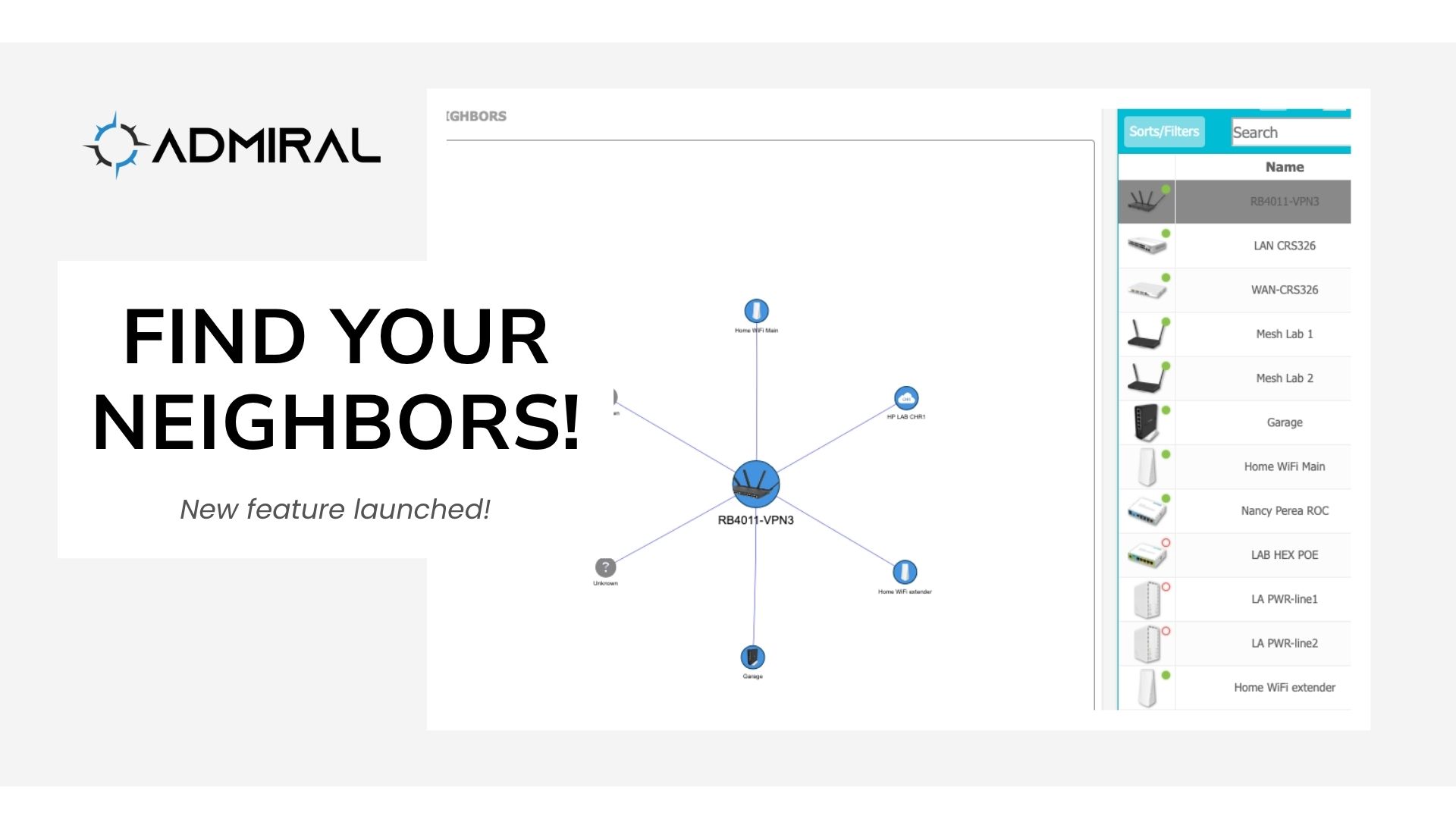Script Commander, is a new feature on Admiral Platform designed to give you better control…

3 Super-Important Things to know about MikroTik AX WiFi
This weekend I decided to “level-up” my home Wi-Fi by mixing in some new MikroTik AX gear with my existing AC setup. I figured it would be a straightforward upgrade—newer radios, faster speeds, better everything. In reality? It turned into a crash course in Wi-Fi band compatibility, DFS headaches, and some configuration lessons that might save you a few hours (and a few curse words).
My Setup (Before the Mayhem)
I’ve been running a pair of MikroTik Audience units meshed on WLAN3, with a wireless backhaul feeding a hAP ac Lite to isolate my youngest son’s PC. It’s been a solid setup for years.
To add Wi-Fi 6 support, I introduced two hAP ax³ units—intending to replace one Audience and extend the 5 GHz mesh with newer AX radios for high-performance connectivity.
In theory, simple swap. In practice… not so much.
1) Frequency Ranges Don’t Always Overlap
I replaced my first Audience (the main router in my office where the Internet comes in) and thought: “Perfect, I’ll push the older Audience units toward the garage and back bedrooms.” Setup went smoothly—configured both AX3s and both Audiences on auto frequency for 5 GHz, and boom, everything connected first try. Sweet!
Then lightning struck—literally.
A quick power outage overnight, and the next morning the whole family is yelling that the Internet’s down. The modem survived, but the Audiences were offline, while the new AX3s were up and reachable via Admiral Platform. What?
After hours of head-scratching, I realized the key issue:
The 5 GHz frequency ranges between the Audience (AC) and AX3 don’t fully overlap.
| Model | Supported 5 GHz Range | UNII Bands |
|---|---|---|
| Audience (AC) | 5180–5320 MHz & 5500–5825 MHz | UNII-1 / UNII-3 |
| hAP ax³ (AX) | 5150–5875 MHz | UNII-1 / 2 / 2e / 3 / 4 |
When the AX units booted up after losing power, they automatically picked the “cleanest” channel—which happened to fall outside the Audience’s range. Unsurprisingly, it was also outside of the frequency range of all of the families devices. The result: both networks were “up” but unable to talk to each other. My families devices were all connecting to the Audiences, but nothing in the AC world could talk to the AX world. What a mess.
🛠 Fix
Manually constrain the AX units to use AC-compatible channels:
/interface wifi set [ find default-name=wifi1 ] channel.frequency=5180-5320,5500-5800
After that, the whole network came back to life—rock solid and frequency-aligned.
2) DFS Sounds Cool… Until It Isn’t
A few hours later, I noticed random Wi-Fi drops lasting a couple of minutes. Devices stayed “connected,” but no traffic flowed. Logs showed periodic channel switches triggered by DFS (Dynamic Frequency Selection).
Quick DFS Primer
DFS is required for Wi-Fi APs that operate on radar-sensitive 5 GHz frequencies. When radar is detected (from weather stations, airports, or even emergency vehicles), your AP must stop transmitting and move to another channel.
That means every time a radar pulse hits, your Wi-Fi pauses while it scans and switches—sometimes for several minutes!
How DFS works:
- Performs a channel availability check before using a DFS frequency (up to 10 min in some regions).
- Continuously monitors for radar activity.
- If radar is detected → immediately vacates that channel.
- Original channel can’t be reused for at least 30 minutes.
In practice: DFS gives you “clean” airspace and more channels—but at the cost of random, unavoidable interruptions.
What Happened to Me
Every time an emergency vehicle drove past my neighborhood, radar triggered DFS, and my home Wi-Fi dropped for 1–2 minutes. Completely unacceptable when you’ve got kids gaming, streaming, and homework deadlines.
🛠 Fix
Disable DFS entirely for reliability:
/interface wifi set [ find default-name=wifi1 ] channel.skip-dfs-channels=all
Yes, you lose a few DFS channels, but I’ll take predictable uptime over “cleaner” RF any day.
3) The WLAN → Wi-Fi Naming Swap Can Trick You
This one’s way smaller, but still burned an hour of my life.
On RouterOS 6 and earlier, the convention was simple:
wlan1= 2.4 GHzwlan2= 5 GHz
So I got used to thinking “1 equals 2, and 2 equals 5,” if you know what I mean.
With AX gear, the interface names changed:
wifi1= 5 GHzwifi2= 2.4 GHz
I discovered this the hard way while running initial performance tests between the AX3s. No matter what tweaks or firmware versions I tried, I could only get about 200 Mbps out of the wifi2 interface. I was convinced something was wrong.
Turns out… wifi2 was actually the 2.4 GHz radio. 🤦♂️
That “poor” 200 Mbps result? In reality, phenomenal performance for 2.4 GHz!
🧠 Lesson Learned
Always double-check which band, frequency, and channel you’re looking at before tuning performance. A quick glance at the interface list could’ve saved me an hour.
Summary
If you’re mixing AC and AX gear, here are the takeaways that’ll save you time and frustration:
- Align your frequency ranges. AX radios can roam into channels older AC gear can’t see.
- Consider disabling DFS if reliability matters more than peak throughput.
- Check interface naming conventions—
wifi1≠wlan1. - Avoid “auto-everything.” Manual control gives better results when mixing generations.
I hope this helps you skip some of the confusion I went through. If your weekend project involves MikroTik Wi-Fi upgrades, maybe this post spares you a few hours of head-scratching (and a couple of angry family members).
Happy configuring—and may your frequencies always align. ⚓️
Keep routing the world with MikroTik, and keep managing your MikroTiks with Admiral!



